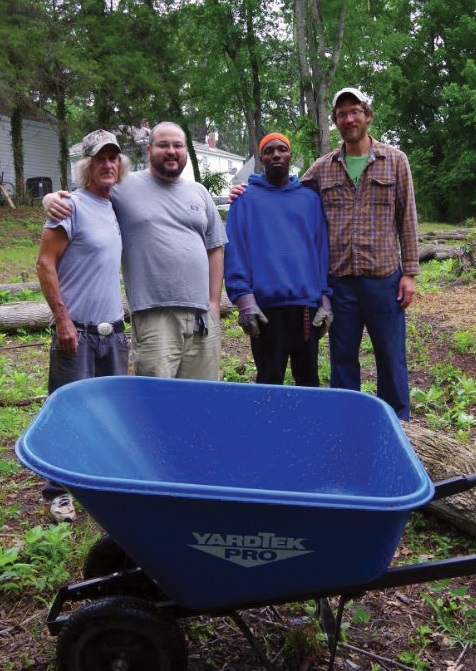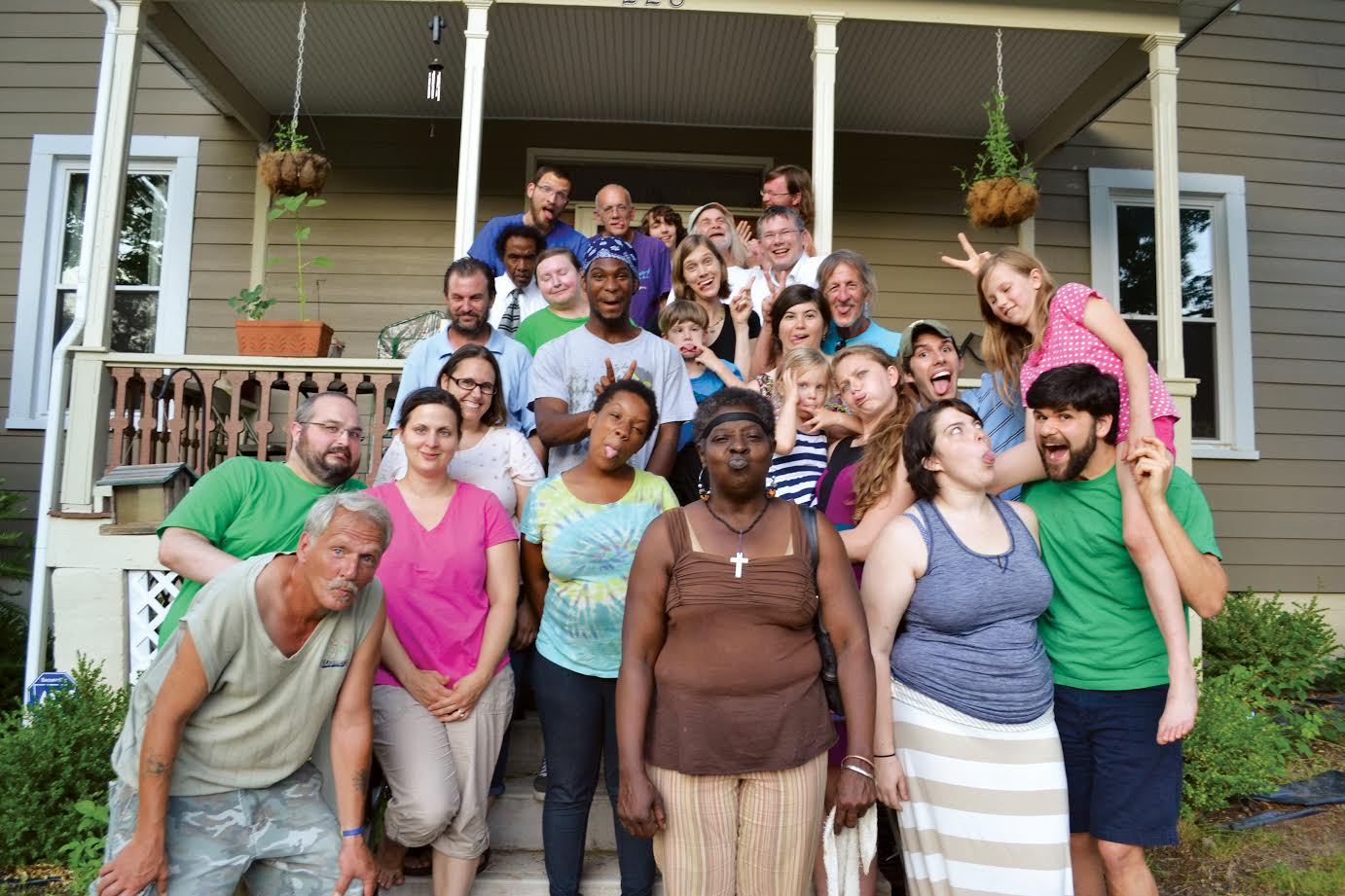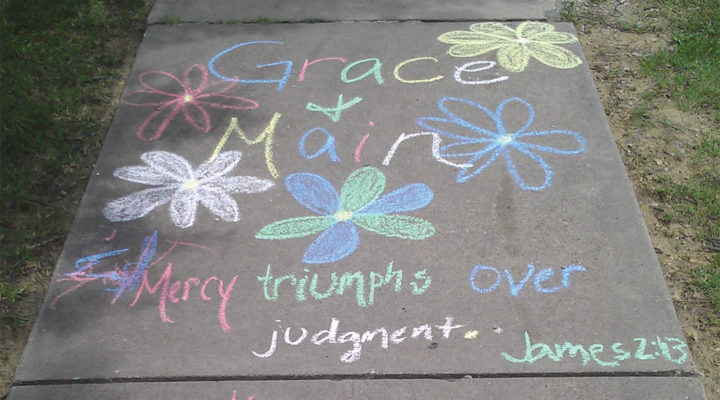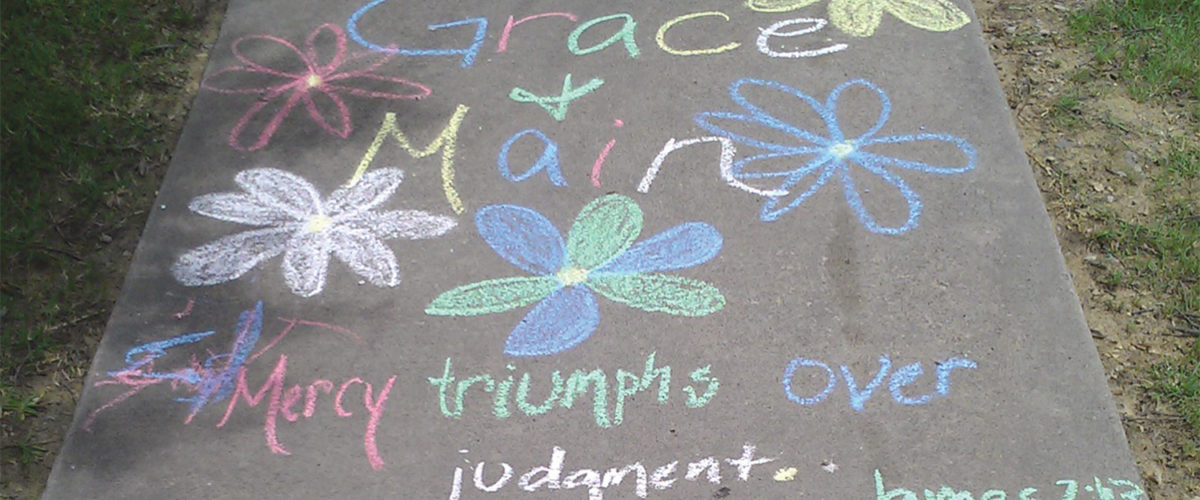In some faith circles, the term “living in intentional community” is a buzz phrase akin to “being missional” or “doing life together.”
But what does the practice actually entail? And are Christians called to do it?
For many in the United States, the idea of living with intention in the communities they serve can be an intimidating concept.
“Believe me, life together scares me too,” said Cooperative Baptist Fellowship field personnel Joshua Hearne, who serves alongside his wife, Jessica, as part of the leadership team at Grace and Main, an intentional and ecumenical Christian community in Danville, Va.
“First and foremost, we are a gathering of folks who believe it is our calling to be living with and among those experiencing things like homelessness, addiction, poverty, hunger, housing insecurity and other marginalizing forces,” Hearne said. “We believe the foundation of all good work is relationships.”
‘Mission is a lifestyle’
The community at Grace and Main began as an “accident” after Jessica and Joshua Hearne joined a Bible study to make friends in November 2009.
“Honestly, I went because I was trying to find friends,” Hearne said. “My wife and I had been in Danville for a little over a year and had good jobs, but we needed friends.”

Joshua Hearne, second from left, and other members of the Grace and Main community in Danville, Va. (Photo/Grace and Main)
The group became closer, sharing meals and prayers, beginning to talk about what it would look like to “go where God was leading even if it was hard or scary — even if it meant giving up other things,” he said. “God used that, baby step-by-baby step, to cultivate this baby community.”
Today the community comprises a “network of hospitality houses” in Danville, a city of nearly 43,000.
People who need a place to stay may live in a house for days, weeks or months at a time, depending on their situation. Neighbors knock on each other’s doors and join each other for meals, and the full community gathers a few times each week for evening prayer. The group is made up of mostly “lay people” but, according to Hearne, “there are a couple of ordained folk.”
In the world of intentional community, this group is what you would call a “dispersed community,” Hearne explained. “We are multiple houses spread over a couple of neighborhoods.”
The community currently has six homes that have taken up a “commitment to hospitality,” meaning they each have one or more guest bedrooms set up as a place for someone to stay.
“We are slowly turning our life into mission,” he said. “Oftentimes we think of mission as something we do — we think of mission as a program.”
But it’s more than that.
“Mission is a lifestyle,” he said.
“Often, Christians are tempted to think of mission as something they fit into the spaces of their lives, but we want to bend our lives around mission.”
Common funds, common lives
In the Grace and Main community, this also includes working with local shelters, food pantries and nonprofit organizations.
“It is also being in real reciprocal relationships with folks who are experiencing things like homelessness, poverty, hunger and addiction,” Hearne said.
“Our wellness is wrapped up in each other,” he added. “It’s not just the person of means or resources caring for the person who experiences a lack; it’s building communities that support everyone.”
The community has come a long way since its initial stages as a Bible study and prayer group.
“We did that and after a while, we said: ‘What if we did all that plus invite people to come eat dinner with us?’” Hearne said. “And then it was: ‘What if we did all that, plus we had a common fund?’”
So members contribute to that fund to help provide for each other.
“One of the first things we bought from that fund was diapers for a single mother who joined us at a meal,” he said.
After a time, Grace and Main members realized what their group had evolved into: “one of those intentional community things.’”
The group looked to different communities in the United States for guidance. Models included Koinonia Farm in Georgia, the Catholic Worker houses and Rutba House in Durham, N.C., Hearne said.
“We had a lot of wonderful and beautiful examples, and we were astonished that all of these things were called intentional communities, but looked so different from each other.”
Despite their differences, each place seemed to share principles of common vocation and intentionality of community.

Members and friends of Grace and Main, an intentional Christian community in Danville, Va., gather outside a member’s home. (Photo/Grace and Main)
A calling for some, not all
In Danville, 13 people have made a formal commitment to this way of life, but around 40 to 50 people show up regularly to prayers and meals.
The community puts an emphasis on incorporating directly affected community members into leadership. A significant number of people who are leaders know what it’s like to be hungry or without shelter.
A man named Roland once befriended the community, which helped him find housing. Hearne visited him and was surprised to find someone sleeping on his couch. Hearne was worried the person had taken advantage of Roland and asked him what happened.
Roland looked at him and said, “Josh, folks need a place to stay.”
This was a turning point for the group.
“After experiencing homelessness for 18 years, Roland … thought it was ludicrous that he would have an empty couch when he knew there were people who didn’t have a place to stay,” Hearne said.
Roland’s declaration changed the way that Hearne and his community interacted with the city.
“What hit me right between the eyes was I had never had that thought,” Hearne said. “That was the time when … we all kind of stopped and thought, ‘Roland is right. How do we live in light of our brother’s faith?’”
Today, Roland is still a part of the Grace and Main and serving as a minister of prayer. He blesses mission teams who visit the community.
However, some are apprehensive when they learn about the way Grace and Main approaches missions and ministry.
“People always say, ‘Oh well, I just think that’s so scary,’ and I say, ‘I do too, but I also find my life is distinctly blessed by these commitments.’”
He is also adamant that this approach is not for everyone.
“We believe the practice of joining or starting an intentional community is the calling of some people, not all people,” he said.
— This story has been edited and was originally published at cbfblog.com.


